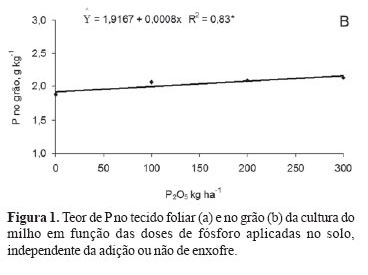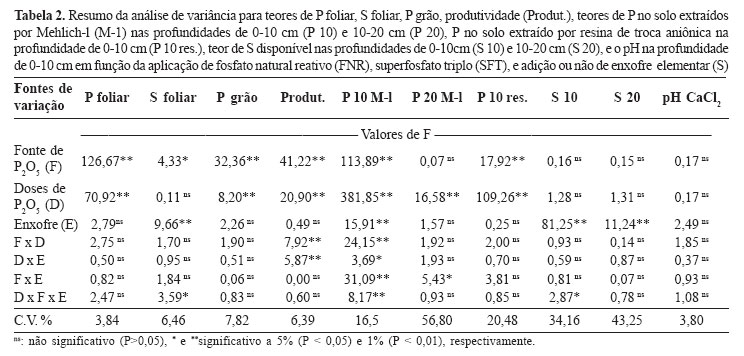The agronomic efficiency of phosphate fertilizers may be affected by phosphorus sources, soil properties, application methods and plant species. The objective of this work was to compare the efficiency of natural reactive phosphate (NRP) and triple super-phosphate (TSP) associated with elemental sulfur applied in the planting furrow of corn. The experiment was conducted in an Oxisol, in the city of Toledo-PR. The treatments were arranged in a randomized block design, in a factorial scheme 2x4x2, with two P sources (TSP and FNR), three fertilizer doses (100, 200 and 300 kg ha-1 P2O5), a control for each source, with or without addition of elemental sulfur (0 and 30 kg ha-1 S) applied at planting, with four replications. The plots consisted of four rows (6 m in length) spaced 0,90 meters. The plot usable area was formed by the center two rows, with 50 cm on each end of the plot left as border. N and K fertilization and the treatments with P and S were done by hand in the furrow and the hybrid Agroceres 8021 was sown subsequently. TSP provided the highest yields compared with NRP in the first year of cultivation. The agronomic efficiency of the NRP was 43 % and 33 % with and without S, respectively. The phosphorus content in leaf tissue was lower with NRP. The elemental S at 30 kg ha-1 did not interfere on the soil pH, but the efficiency of the phosphate fertilization was higher with the sulfur application.
Agronomic efficiency; phosphorus sources; Zea mayz L.














